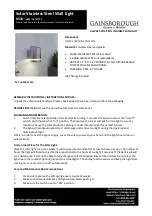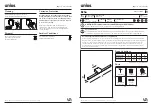
CircuPool
Help Guides:
RJ Classic Series
3
pH - Acidity/Alkalinity
pH indicates how acidic or basic the water is. pH should be tested daily at first. Once you gain experience with your pool, less
frequent monitoring may be appropriate, depending on your pool's typical rate of pH change. pH levels between 7.5 and 7.8 are
ideal, while levels between 7.2 and 7.8 are acceptable for swimming.
TA - Total Alkalinity
Total alkalinity indicates the water's ability to buffer pH changes. Buffering means you need to use a larger quantity of a chemical to
change the pH. At low TA levels, the pH tends to swing around wildly. At high TA levels, the pH tends to drift up. TA contributes to
the LSI which indicates the tendency for plaster damage or calcium scaling.
You can raise TA with baking soda. It is often best to make large TA adjustments in a couple of steps, testing the water after each
one, as adding baking soda will also affect the pH and you don't want the pH going out of range.
CH - Calcium Hardness
Calcium hardness indicates the amount of calcium in the water. A plaster pool should have CH levels between 250 and 350 if
possible. If you have a spa you might want to keep CH at at least 100 to 150 to reduce foaming. CH contributes to the LSI which
indicates the tendency for plaster damage or calcium scaling. You increase CH with calcium chloride, sold as a deicer and by pool
stores, or calcium chloride dihydrate, sold by pools stores for increasing calcium. You lower calcium by replacing water or using a
reverse osmosis water treatment.
See following Basic Water Chemistry pages for more specific information about Phosphates, Nitrates, and Saturation Index (LSI)
Содержание RJ Classic Series
Страница 14: ...CircuPool Help Guides RJ Classic Series 14 Examples of GOOD titanium plates...
Страница 15: ...CircuPool Help Guides RJ Classic Series 15 Examples of DAMAGED titanium plates...
Страница 16: ...CircuPool Help Guides RJ Classic Series 16 Examples of DAMAGED titanium plates continued...




































